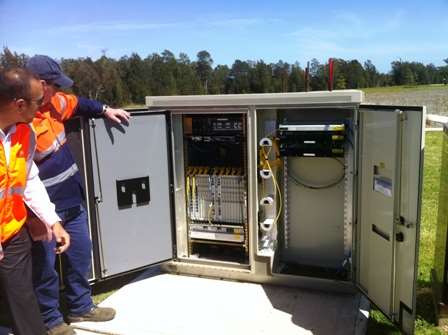With the result of election 2016 no longer in doubt and caretaker mode lifted, NBN Co has a fresh mandate to continue with the national broadband network rollout in its current format.
This week, that meant signing a fresh construction deal to bring NBN services into Telstra’s hybrid fibre coaxial (HFC) cable footprint.
Six network construction firms have picked up work estimated to be worth in excess of $1 billion.
The firms - Lend Lease, Broadspectrum, Fulton Hogan, Downer, ISGM and BSA – will work to refit connections covered by Telstra’s HFC network to NBN standards.
“Premises will be primarily connected to NBN’s upgraded HFC technology, however, they will also be connected via deployment of a multi-technology mix (MTM) solution,” NBN said.
Telstra will oversee the work in its HFC footprint under a separate $1.6 billion deal signed back in April.
However, NBN said that “Telstra’s role will be limited to engineering, design, some construction, procurement and construction management.”
“Decisions regarding the release of footprint for sale, product development, and the provision of information about the rollout will continue to be matters for NBN,” it said.
Telstra this week opened a formal recruitment campaign to rebuild its HFC expertise to meet its obligations as overseer.
“Telstra knows its own network so it obviously makes sense for it to drive and oversight the upgrade necessary to deliver the speeds of 50Mbps (and beyond) that current [NBN] policy requires,” Australia’s Communications Workers Union (CWU) said.
“But resourcing the contract will involve rebuilding its pool of HFC skills which the CWU believes has shrunk significantly in recent years.”
CWU said that Telstra is currently recruiting network delivery staff with skills such as “design and/or field experience in the CAN [copper access network] or HFC network; project management; reporting and analytical skills; contract negotiation and/or management; construction project management and implementation skills.”
Telstra is understood to be looking both internally and externally to rebuild the capability.
NBN would have been able to continue the HFC part of its rollout regardless of which side won power – both sides of politics supported it in their broadband policies.
Time to review FTTN despite election win?
However, Labor’s defeat means a continuation of fibre-to-the-node (FTTN) technology. Labor had promised to axe that part of the rollout in favour of fibre-to-the-premises (FTTP).
That could be a concern as it commits Australia to a technology trajectory that is falling out of fashion internationally, according to telecommunications analyst Paul Budde.
“The message I am getting from talks with some of the European telcos is that many of them who began to implement FTTN solutions a decade or so ago now see that a profitable business model for a full FTTH [fibre to the home] network is within reach,” he said.
“In general terms, where they still operate ADSL and HFC networks they will move straight to FTTH – FTTN is no longer on the agenda.”
Budde said that “if we are determined to roll out FTTN we need to have a plan in place that will bring us to the next phase of full fibre deployment”. In other words, we should define an upgrade path now.
However, he was concerned that even with FTTH “profitable”, it might be ignored due to a lack of market pressure on NBN and its shareholders to change course or plan for a full-fibre future.









